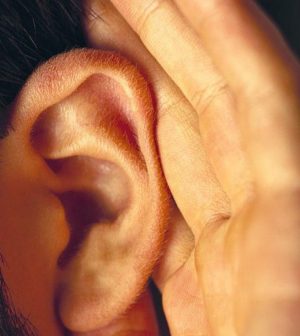- Navigating Your Midlife Crisis: Embracing New Possibilities
- City Raccoons Showing Signs of Domestication
- Mapping the Exposome: Science Broadens Focus to Environmental Disease Triggers
- One Week Less on Social Media Linked to Better Mental Health
- Your Brain Changes in Stages as You Age, Study Finds
- Some Suicide Victims Show No Typical Warning Signs, Study Finds
- ByHeart Formula Faces Lawsuits After Babies Sickened With Botulism
- Switch to Vegan Diet Could Cut Your Greenhouse Gas Emissions in Half
- Regular Bedtime Does Wonders for Blood Pressure
- Dining Alone Could Mean Worse Nutrition for Seniors
Coronavirus May Infect, Harm the Inner Ear

By now, it would seem that there is almost no part of the body that the new coronavirus does not strike, but new research adds one more: COVID-19 may be able to infect the inner ear and affect hearing and balance.
There have been reports of COVID-19 patients with symptoms such as hearing loss, ringing in the ears (tinnitus), dizziness and balance problems, so Massachusetts Institute of Technology and Massachusetts Eye and Ear scientists used cellular models of the human inner ear, along with adult human inner ear tissue, and exposed them to the virus.
Their results suggest that the SARS-CoV-2 virus can infect the inner ear, specifically hair cells that are crucial for hearing and balance. To a lesser degree, the coronavirus can infect Schwann cells, which insulate neurons.
Other cell types in the inner ear aren’t susceptible to infection, according to the study published Oct. 29 in the journal Communications Medicine.
“Having the models is the first step, and this work opens a path now for working with not only SARS-CoV-2 but also other viruses that affect hearing,” study co-leader Lee Gehrke said in an MIT news release. He’s a professor at the university’s Institute for Medical Engineering and Science.
Possible coronavirus entry routes to the ears include the Eustachian tube, which connects the nose to the middle ear, the researchers suggested.
The virus may also be able to get out of the nose through small openings surrounding the olfactory nerves, enter the brain space and infect cranial nerves, including the one that connects to the inner ear, said study co-leader Dr. Konstantina Stankovic, former chief of otology and neurotology at Massachusetts Eye and Ear. She is now chair of the Department of Otolaryngology – Head and Neck Surgery at Stanford University School of Medicine.
The study offers strong evidence that the coronavirus can cause hearing and balance problems, but the actual percentage of COVID-19 patients who have experienced ear problems is unknown.
“Initially, this was because routine testing was not readily available for patients who were diagnosed with COVID, and also, when patients were having more life-threatening complications, they weren’t paying much attention to whether their hearing was reduced or whether they had tinnitus,” Stankovic said in the release.
“We still don’t know what the incidence is, but our findings really call for increased attention to audiovestibular symptoms in people with COVID exposure,” she said.
The team’s next step is to test possible treatments for the inner ear infections caused by SARS-CoV-2 and other viruses.
More information
The U.S. Centers for Disease Control and Prevention outlines COVID-19 symptoms.
SOURCE: MIT, news release, Oct. 29, 2021
Source: HealthDay
Copyright © 2025 HealthDay. All rights reserved.










